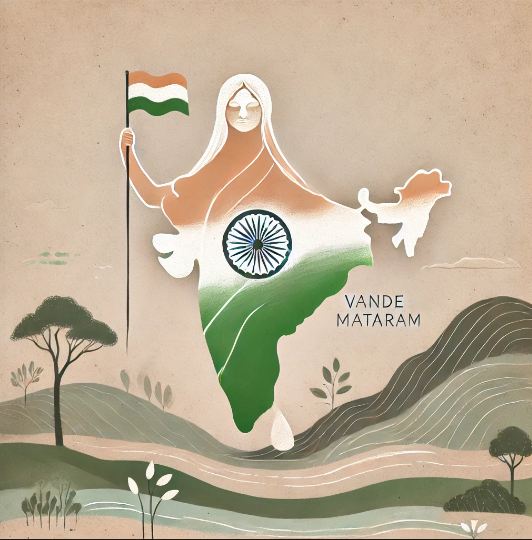Introduction
Bankim Chandra Chattopadhyay (1838–1894), also known as Bankim Chandra Chatterjee, was a prominent figure in Indian literature, social reform, and nationalism. He is widely regarded as one of the key architects of modern Bengali literature and is best known as the composer of “Vande Mataram,” India’s national song. His works played a crucial role in inspiring the freedom movement and shaping India’s cultural renaissance.
Early Life
- Born: June 27, 1838, in Naihati, Bengal Presidency, British India.
- Parents:
- Father: Yadav Chandra Chattopadhyay (a government official).
- Mother: Durgadevi.
- Education:
- Studied at Hooghly Mohsin College and later at Presidency College in Calcutta (now Kolkata).
- Earned a degree in law from the University of Calcutta in 1869.
- Among the first graduates of the University of Calcutta in 1858.
Literary Contributions
Bankim Chandra Chattopadhyay is considered the pioneer of Bengali prose fiction. He wrote novels, essays, and poems that continue to be celebrated for their depth and nationalism.
- Novels:
- Durgeshnandini (1865): The first Bengali novel, combining romance and history.
- Kapalkundala (1866): One of his finest works, blending mysticism and romance.
- Anandamath (1882): His most famous novel, set against the backdrop of the Sannyasi Rebellion. It introduced “Vande Mataram” as a hymn to the motherland.
- Other notable works:
- Devi Chaudhurani
- Krishnakanter Will
- Rajmohan’s Wife (his first English novel).
- Essays and Articles:
- Wrote extensively on religion, politics, and society, promoting cultural pride and nationalism.
- Wrote extensively on religion, politics, and society, promoting cultural pride and nationalism.
- “Vande Mataram”:
- Composed as part of his novel Anandamath.
- Became a rallying cry for Indian independence and was later adopted as India’s National Song.
- It praises India as the motherland and glorifies its natural beauty, divinity, and cultural heritage.
Philosophy and Vision
- Advocated for a blend of modernity and tradition in Indian society.
- Emphasized the importance of self-reliance and cultural pride.
- Supported the idea of nationalism rooted in Indian spirituality and ethics.
Social and Political Influence
- His writings inspired a sense of patriotism and self-respect among Indians.
- Played a pivotal role in awakening the nationalist consciousness during British colonial rule.
- Through his novels and essays, he highlighted social issues like women’s education, caste discrimination, and the need for unity.
Professional Career
- Worked as a Deputy Magistrate and Deputy Collector under the British administration.
- Despite serving in the colonial government, he used his position and writings to subtly criticize British rule and inspire Indian nationalism.
Personal Life
- Married at a young age, as per the customs of the time. His first wife passed away, and he later married Rajlakshmi Devi.
- Known for his disciplined lifestyle and intellectual rigor.
Legacy and Recognition
- Known as the “Sahitya Samrat” (Emperor of Literature) in Bengali literary circles.
- His works continue to be celebrated for their literary merit and patriotic fervor.
- “Vande Mataram” remains a symbol of India’s unity and cultural identity.
Death
- Died: April 8, 1894, in Kolkata, Bengal Presidency, British India.
Key Contributions
- Literary Renaissance:
- Elevated Bengali literature to new heights, influencing later writers like Rabindranath Tagore.
- Nationalism:
- Inspired generations of freedom fighters, including leaders like Bal Gangadhar Tilak and Mahatma Gandhi.
- Cultural Impact:
- His fusion of literature and nationalism remains a cornerstone of India’s intellectual and cultural heritage.
Bankim Chandra Chattopadhyay’s life and works exemplify a blend of literary brilliance and deep patriotism, making him one of India’s most revered literary and nationalist figures.




